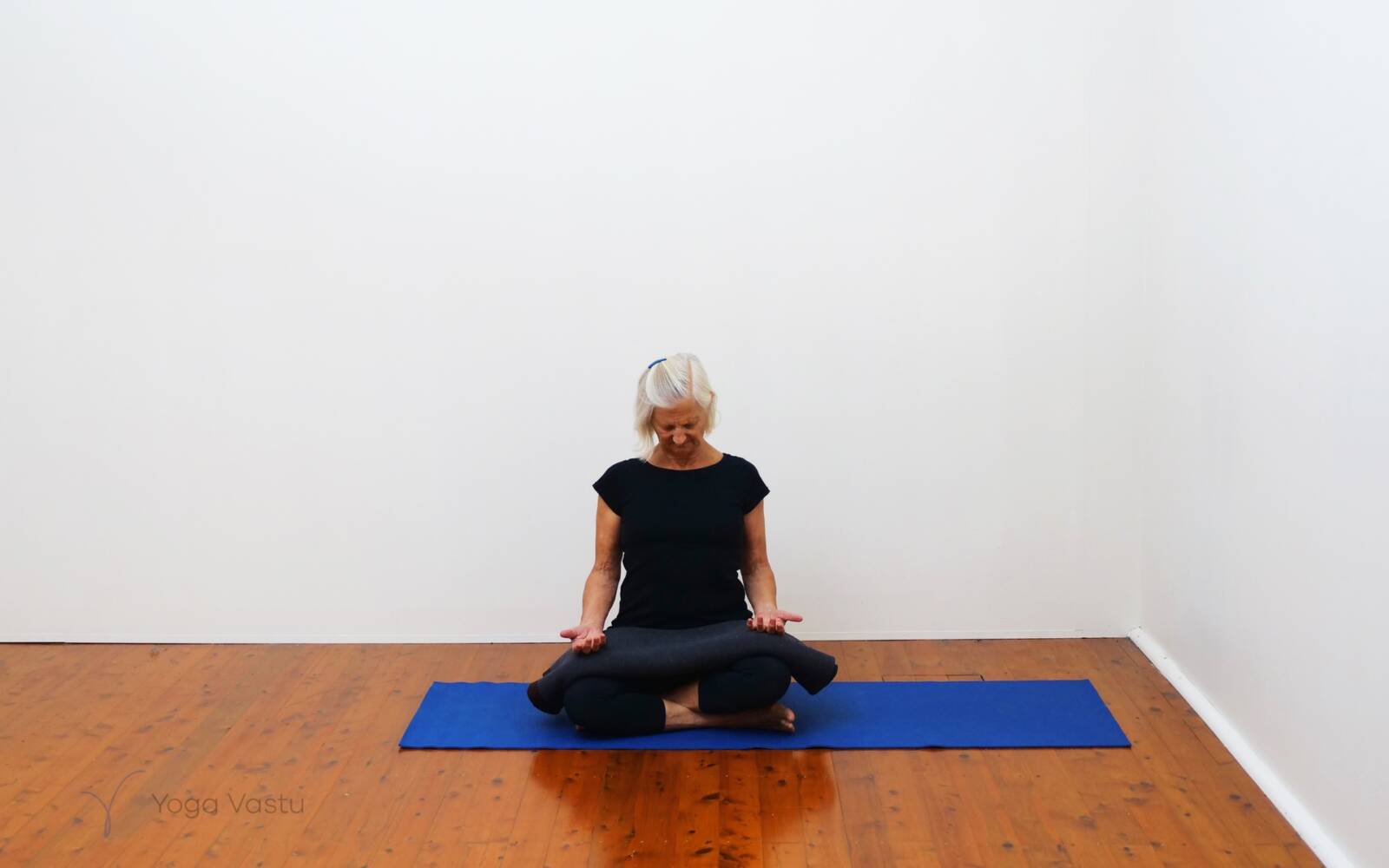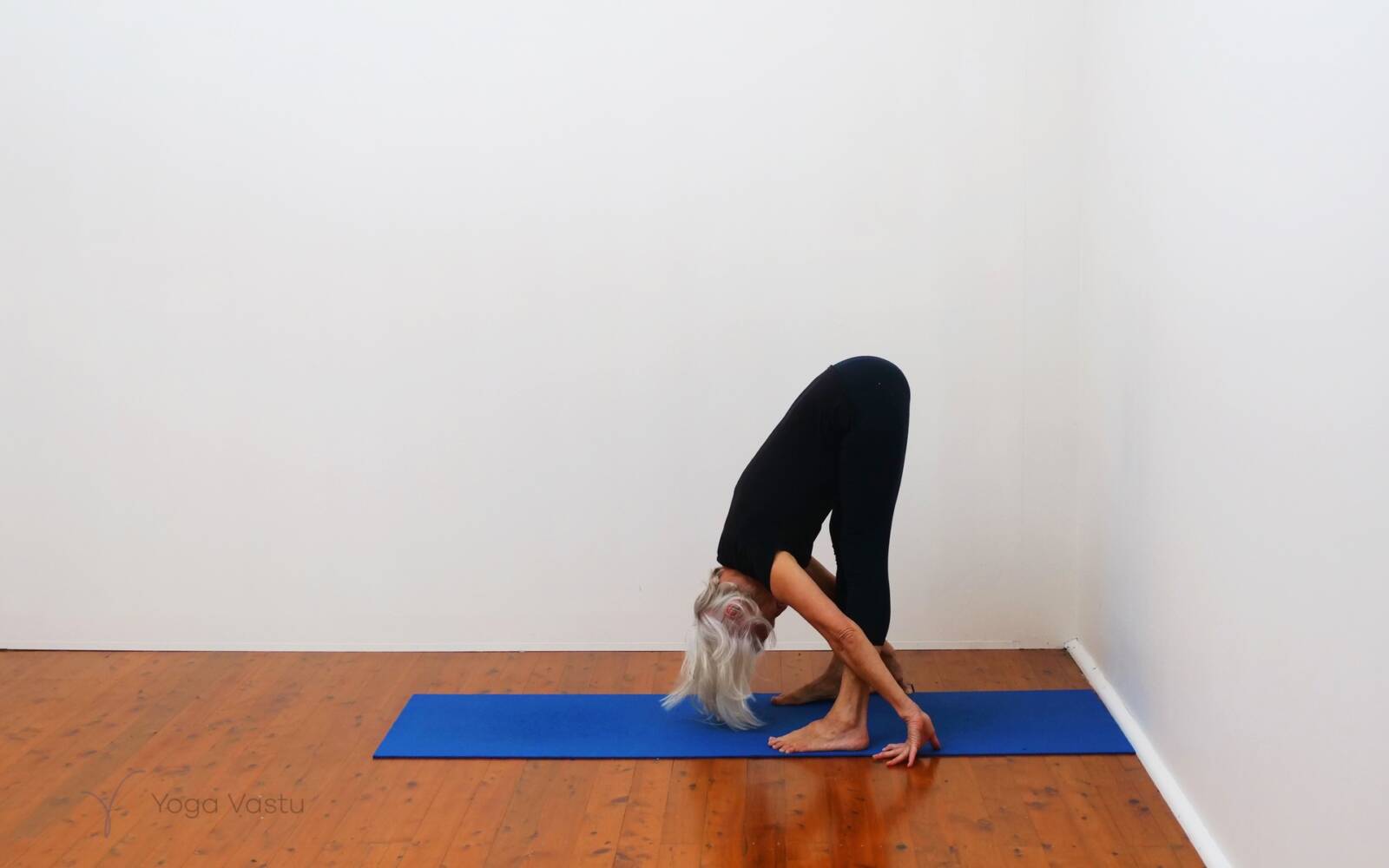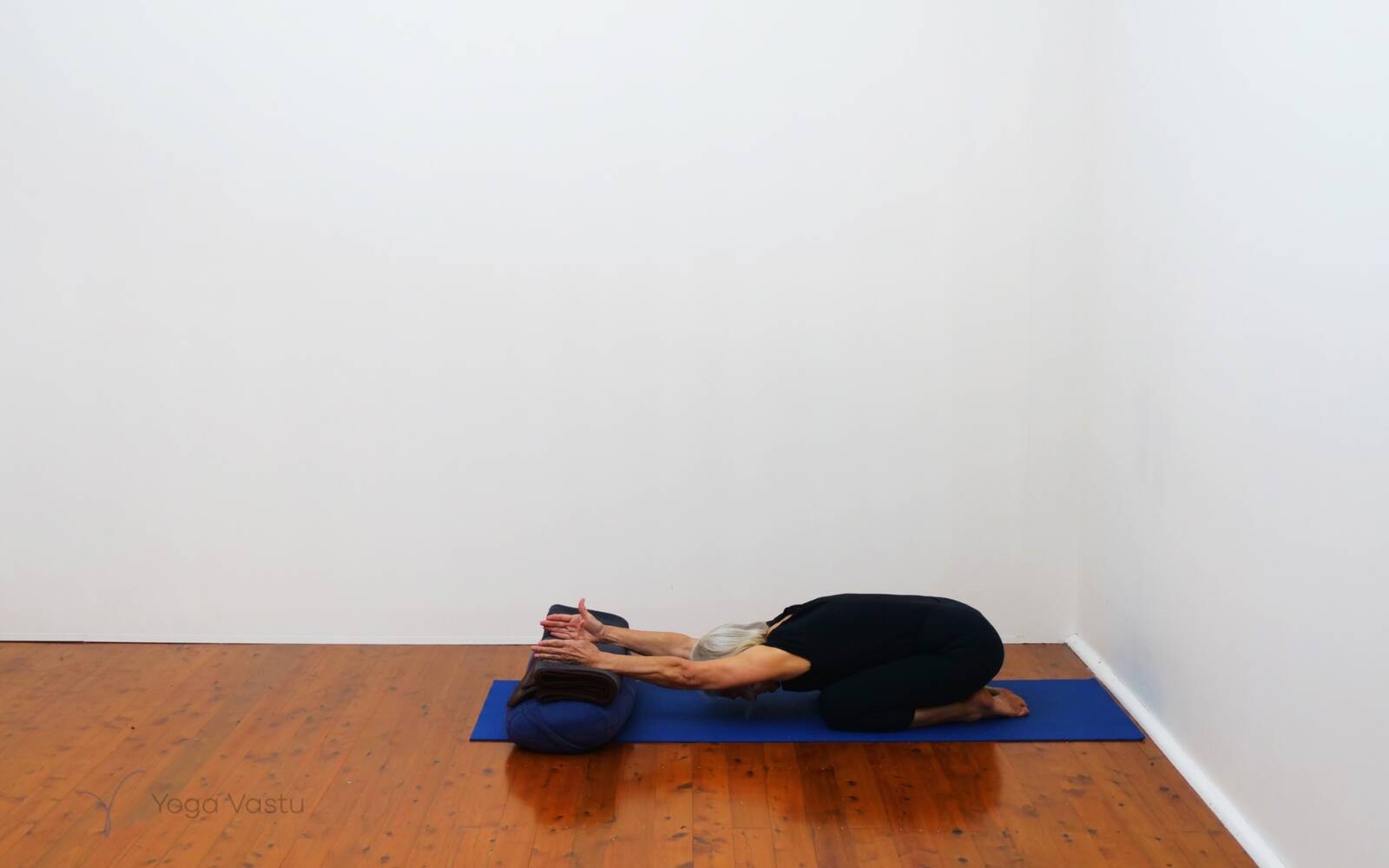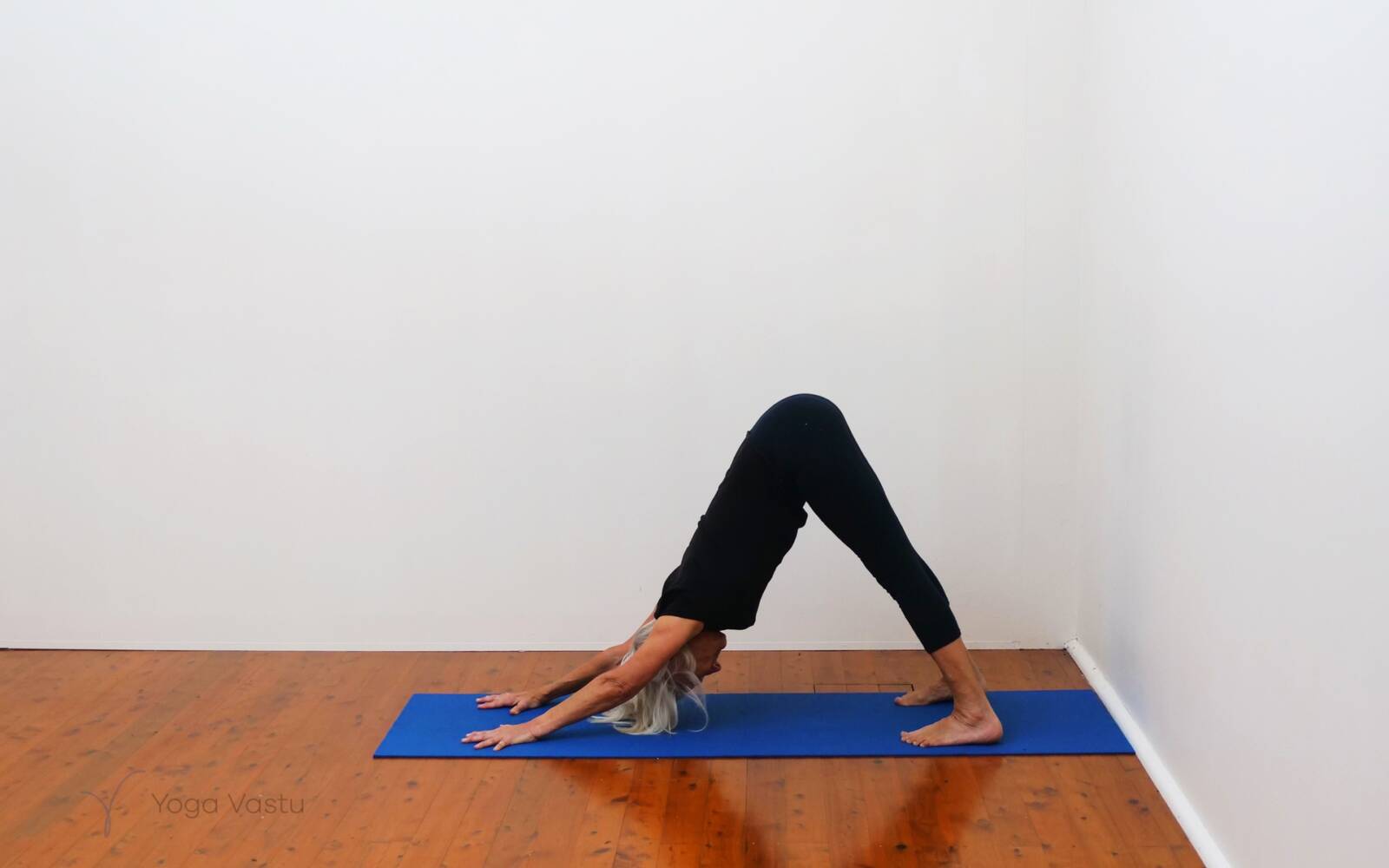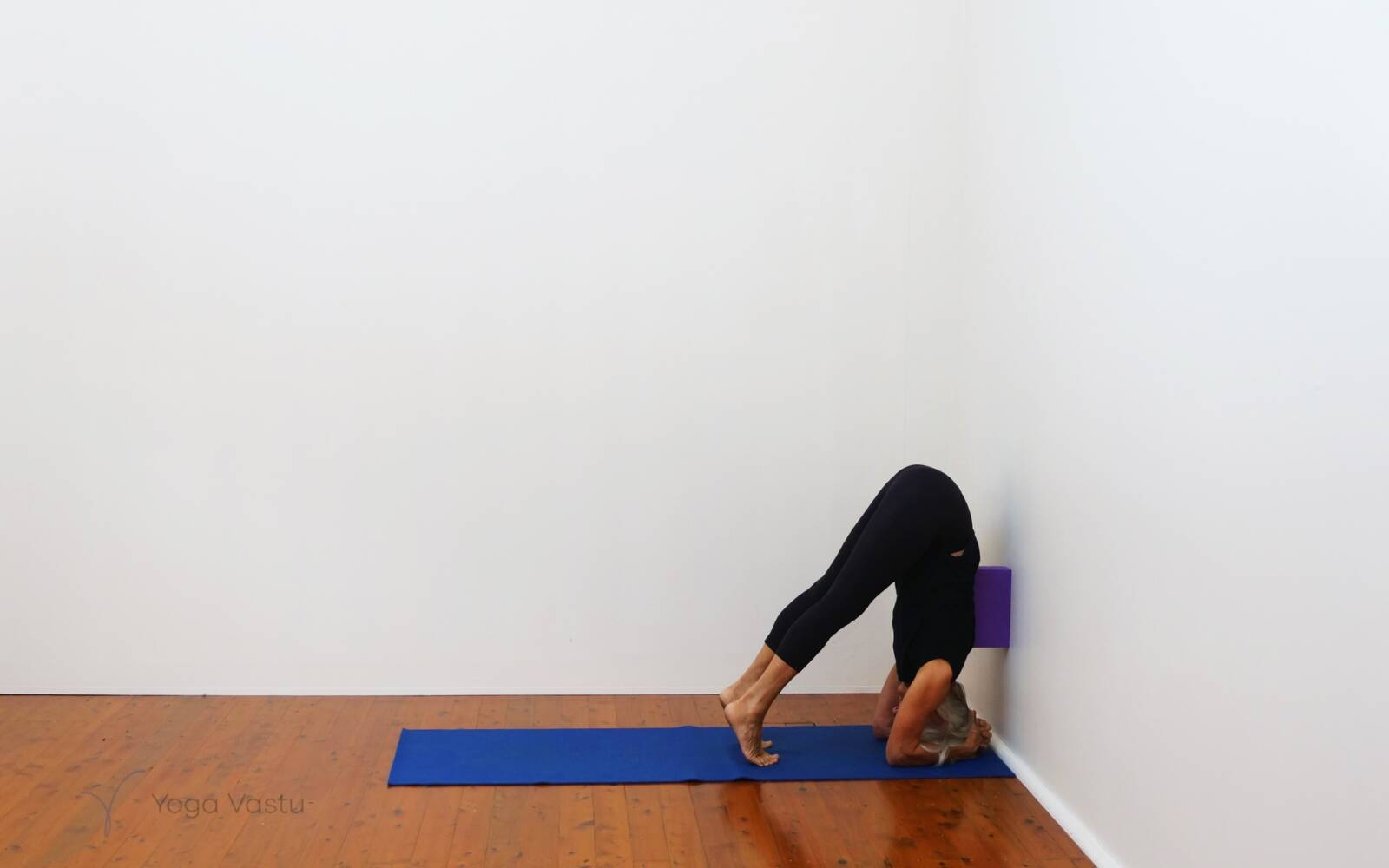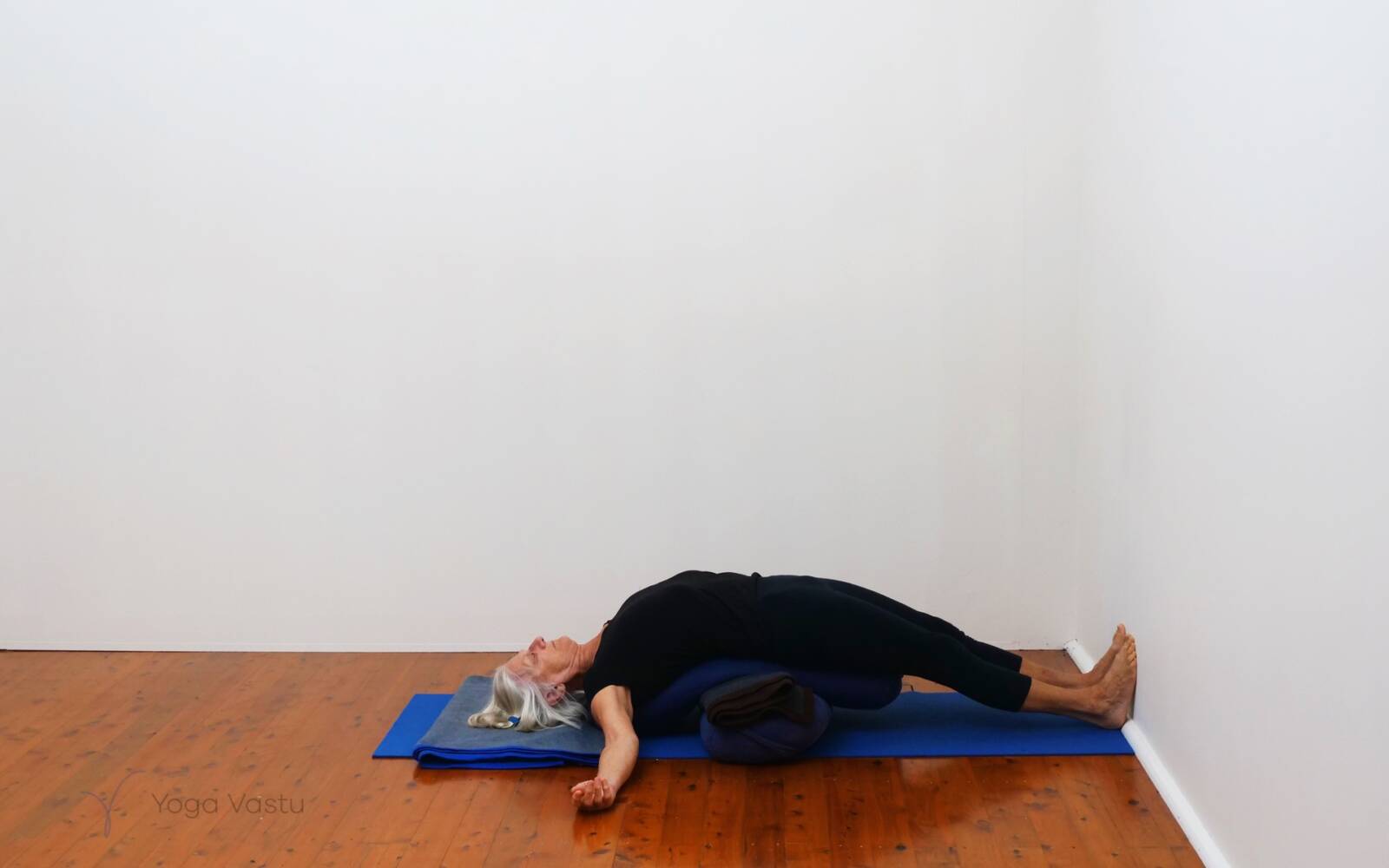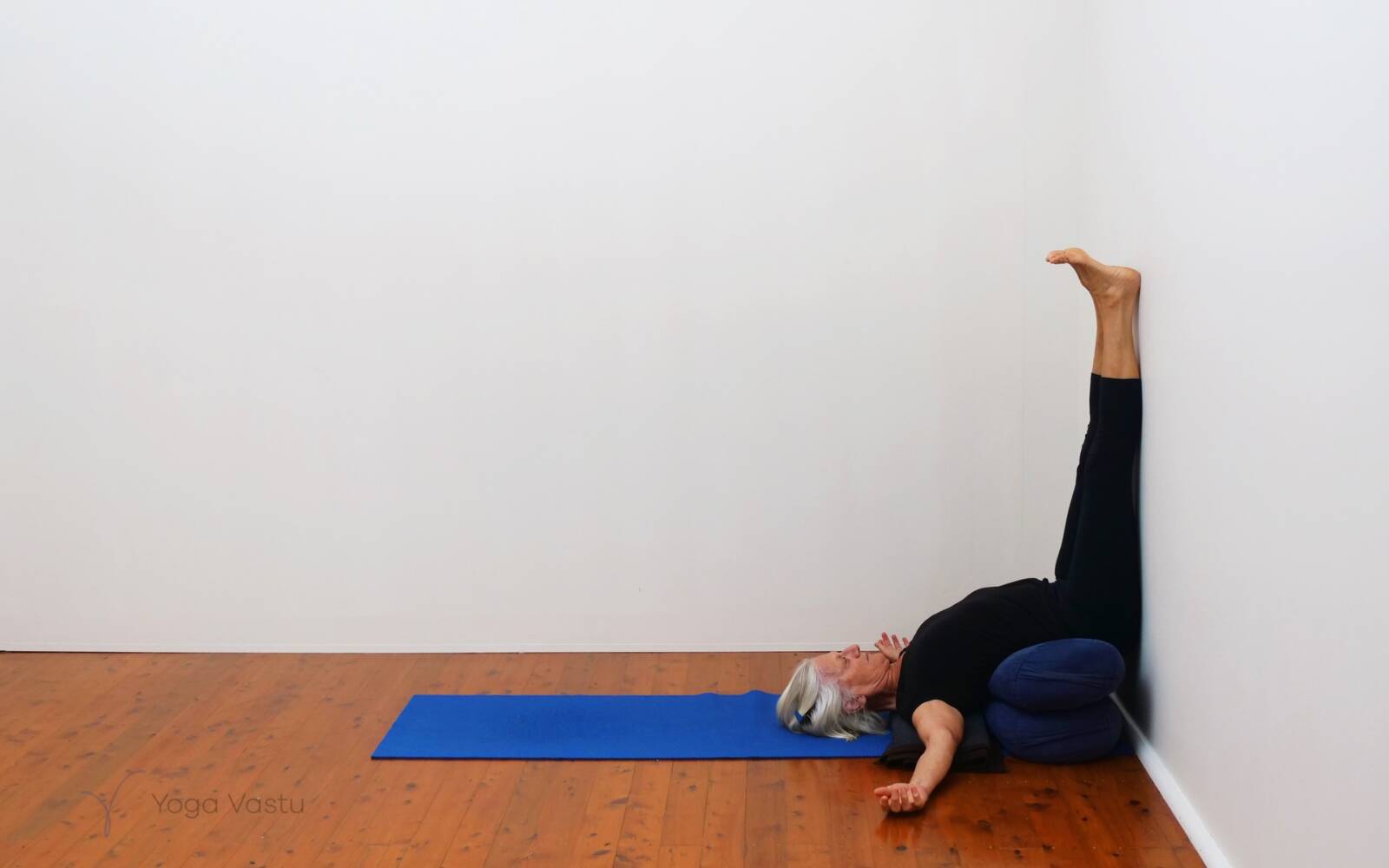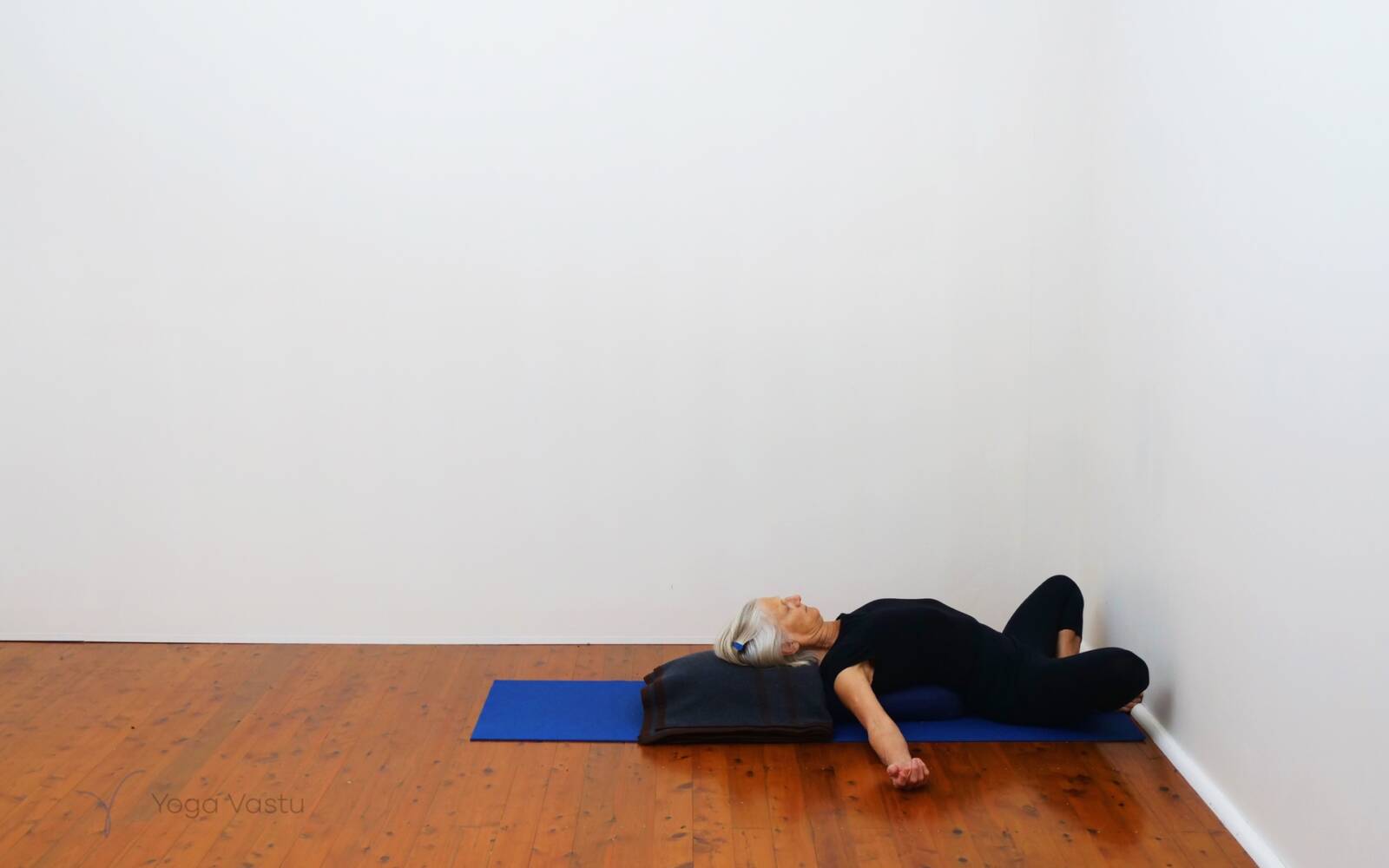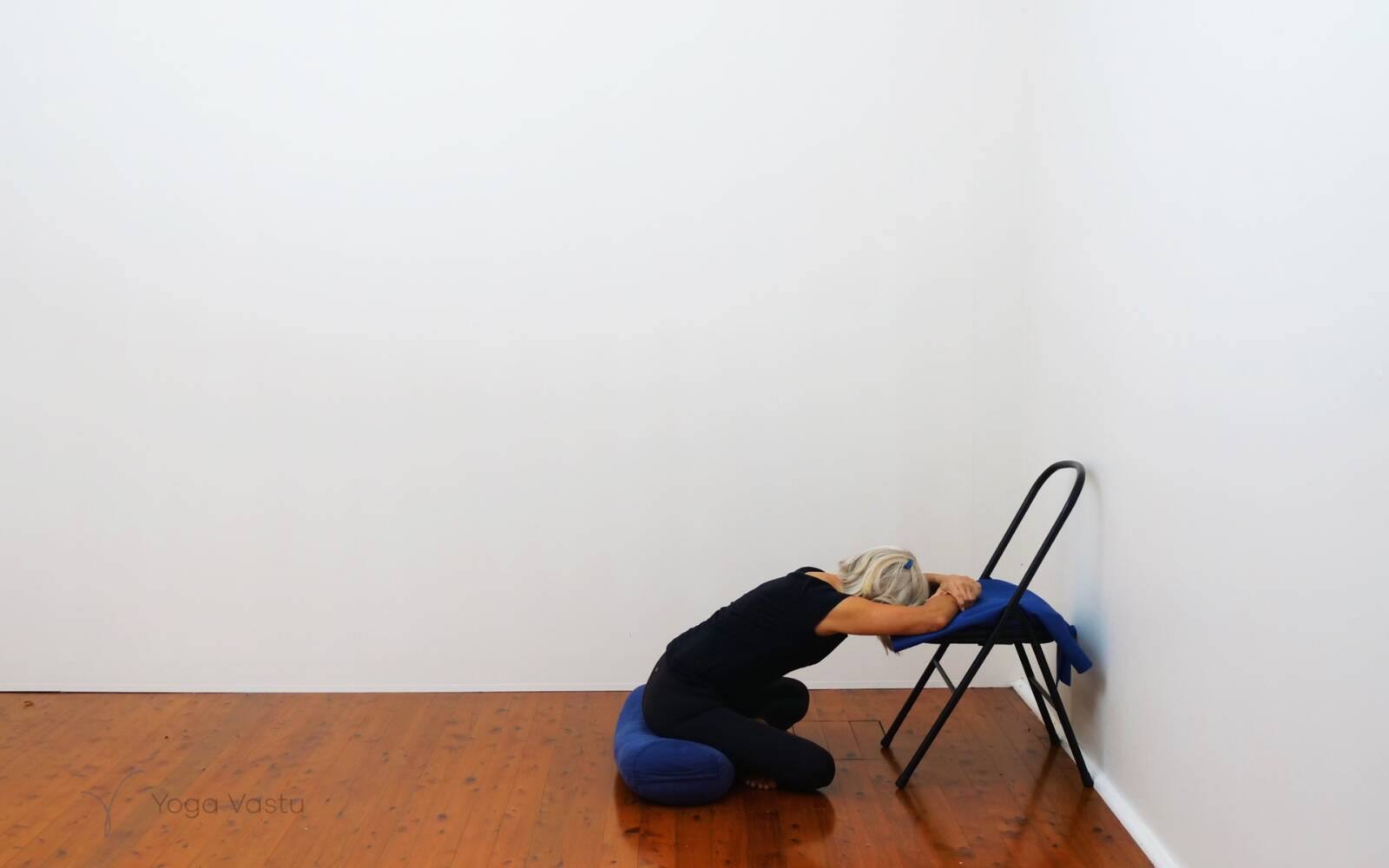After a brief asana practice to get us connected to our bodies through such poses as Adho Mukha Svanasana, Uttanasana, Virasana Forward, Prasarita Padottanasana, and Sirsasana, we will move on to the restorative and pranayama session where we will focus on becoming grounded through breathing meditation.
Incorporating restorative sessions into an Iyengar yoga practice can also help to balance out more physically demanding poses, reducing the risk of injury and promoting overall physical and mental balance.
By practicing specific pranayama techniques, such as deep breathing, alternate nostril breathing or Viloma pranayama, during their restorative sessions practitioners can increase the efficiency of their lungs and reduce the risk of respiratory problems such as asthma.
In addition, pranayama can help to reduce stress and anxiety. Focusing on the breath can help to calm the mind, reduce racing thoughts, and promote a sense of relaxation and calmness. This can be especially helpful for individuals who experience stress or anxiety on a regular basis.
Amongst others, a technique we often use in our restorative sessions and will be using today is Viloma pranayama. This involves interrupted inhalation and exhalation. To practice Viloma, begin by inhaling normally, then pausing and taking in small sips of air in three parts, holding for a few seconds each time. Exhale smoothly and completely, then repeat the process.
Viloma breathing is beneficial for several reasons. It helps to increase lung capacity, improve oxygen intake, and promote relaxation. By taking in small sips of air, the body is forced to use more of the lung’s capacity, improving respiratory health. Additionally, the interrupted breath pattern can help to slow down the heart rate, lower blood pressure, and calm the mind, reducing stress and anxiety.
Regular practice of Viloma breathing can also improve the overall quality of breathing, making it easier to breathe during physical activity and everyday life. It can also improve mental clarity and focus, as it requires concentration and awareness of the breath.
Video stills from this sequence
